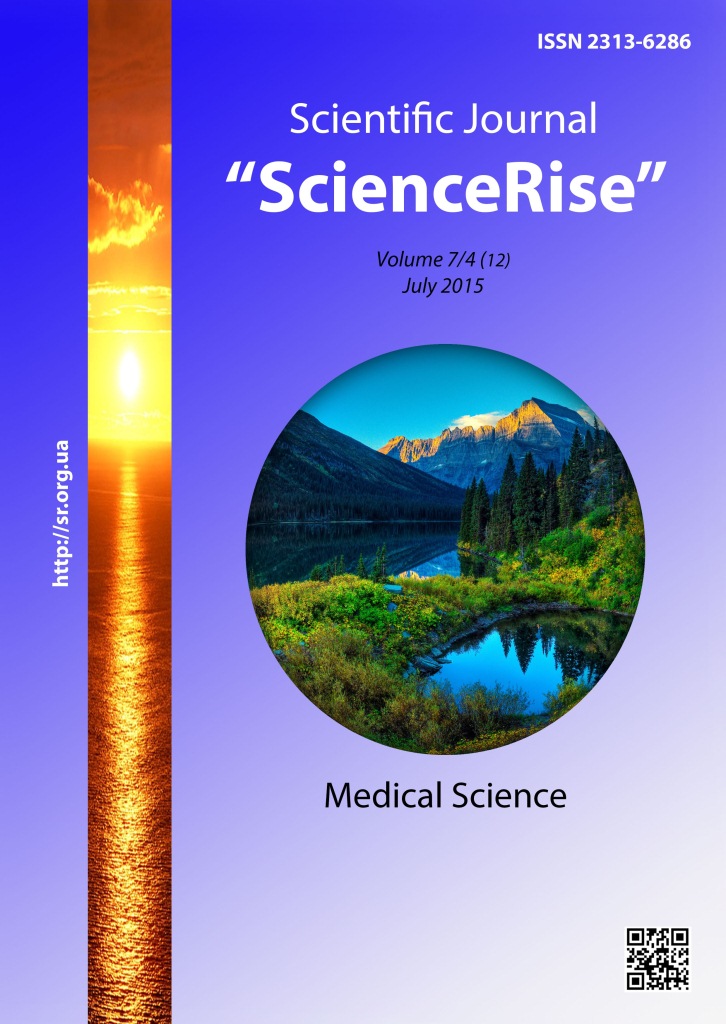Detection of the criteria of prognostication of efficency of chronic acquired toxoplasmosis treatment
DOI:
https://doi.org/10.15587/2313-8416.2015.47258Keywords:
chronic acquired toxoplasmosis, prognostic coefficients (PC), informativity of (I) signs, antiprotozoal therapy, anti-toxoplasmosis immunoglobulin.Abstract
The great number of treatment schemes of toxoplasmosis predetermines the question for clinician how to choose the most effective therapy regimen.
Aim. Detection of the criteria of prognostication of efficiency of the treatment patients with the chronic acquired toxoplasmosis (CAT) in an acute phase before and after the complex therapy.
Methods. For attaining the set aim we examined 143 patients (92 women and 51 men) 18-75 years old with CAT in an acute phase.
For evaluation of efficiency of the complex antiparasitic pathogenetic therapy and the character of dynamics of the studying indicators there was carried out the repeat examination of 143 patients in 1-2 and 5-6 month after the end of treatment.
Results. An efficiency of considered treatment regimens depends on an initial pathogenetic determinant specific for each of them and its calculation allows prognosticate and individualize the treatment of patients.
Conclusions. The immunological parameters, data of clinical blood analysis and biochemical indicators of the liver function and also the clinical-anamnestic indicators have the predictor properties that allows use it for prognosis of efficiency of CAT treatment.
An efficiency of the different treatment regimens of toxoplasmosis can be prognosticated on the base of initial values of parameters of homeostasis of patient’s organism.
An efficiency of elaborated algorithms of prognosis of efficiency of the different regimens of CAT therapy was 86,7-90% at the reliability ≥95%, that allows recommend it for clinical use.
The use of prognostic algorithms allows individualize the treatment of patients with CAT.
References
Aver'janova, E. L. (2006). Kliniko-immunologicheskaja harakteristika hronicheskogo toksoplazmoza s porazheniem organa zrenija: dis. … kand. med. nauk : 14.00.10 : zashhishhena 19.04.06. SPb., 143.
Vozianova, Zh. I. (2002). Infekcionnye i parazitarnye bolezni. Kyiv : Zdorov’ja, 3, 285–315.
Kazancev, A. P. (1985). Toksoplazmoz. Lviv : Medicina, 168.
Gubler, E. V. (1978). Vychislitel'nye metody analiza i raspoznavanija patologicheskih processov. Lviv : Medicina, 294.
Zosimov, A. M., Golіk, V. P. (2009). Disertacіjnі pomilki. Kharkiv : VD״ІNZhEK״, 264.
Bodnja, K. I., Bobrova, O. V., Kocyna, S. S. (2009). Sposib likuvannja hronichnogo nabutogo toksoplazmozu. Pat. u 2009 01209 UA, MPK (2009) A61K 31/00. № 43188; Zajavl. 16.02.09; Opubl. 10.08.09; Bjul., 15, 6.
Stock, A. K., Heintschel von Heinegg, E. et al. (2013). Latent Toxoplasma gondii infection leads to improved action control. Brain Behave. Immun, 12, 14–17.
Walker, D. M., Oghumu, S., Gupta, G. et al. (2013). Mechanisms of cellular invasion by intracellular parasites. Cellular and Molecular Life Sciences, 13, 27–31.
Chemoh, W., Sawangjaroen, N., Nissapatorn, V. et al. (2013). Toxoplasma gondii infection: What is the real situation? Exp. Parasitol, 135 (4), 9–13.
Downloads
Published
Issue
Section
License
Copyright (c) 2015 Оксана Вячеславовна Боброва

This work is licensed under a Creative Commons Attribution 4.0 International License.
Our journal abides by the Creative Commons CC BY copyright rights and permissions for open access journals.
Authors, who are published in this journal, agree to the following conditions:
1. The authors reserve the right to authorship of the work and pass the first publication right of this work to the journal under the terms of a Creative Commons CC BY, which allows others to freely distribute the published research with the obligatory reference to the authors of the original work and the first publication of the work in this journal.
2. The authors have the right to conclude separate supplement agreements that relate to non-exclusive work distribution in the form in which it has been published by the journal (for example, to upload the work to the online storage of the journal or publish it as part of a monograph), provided that the reference to the first publication of the work in this journal is included.

